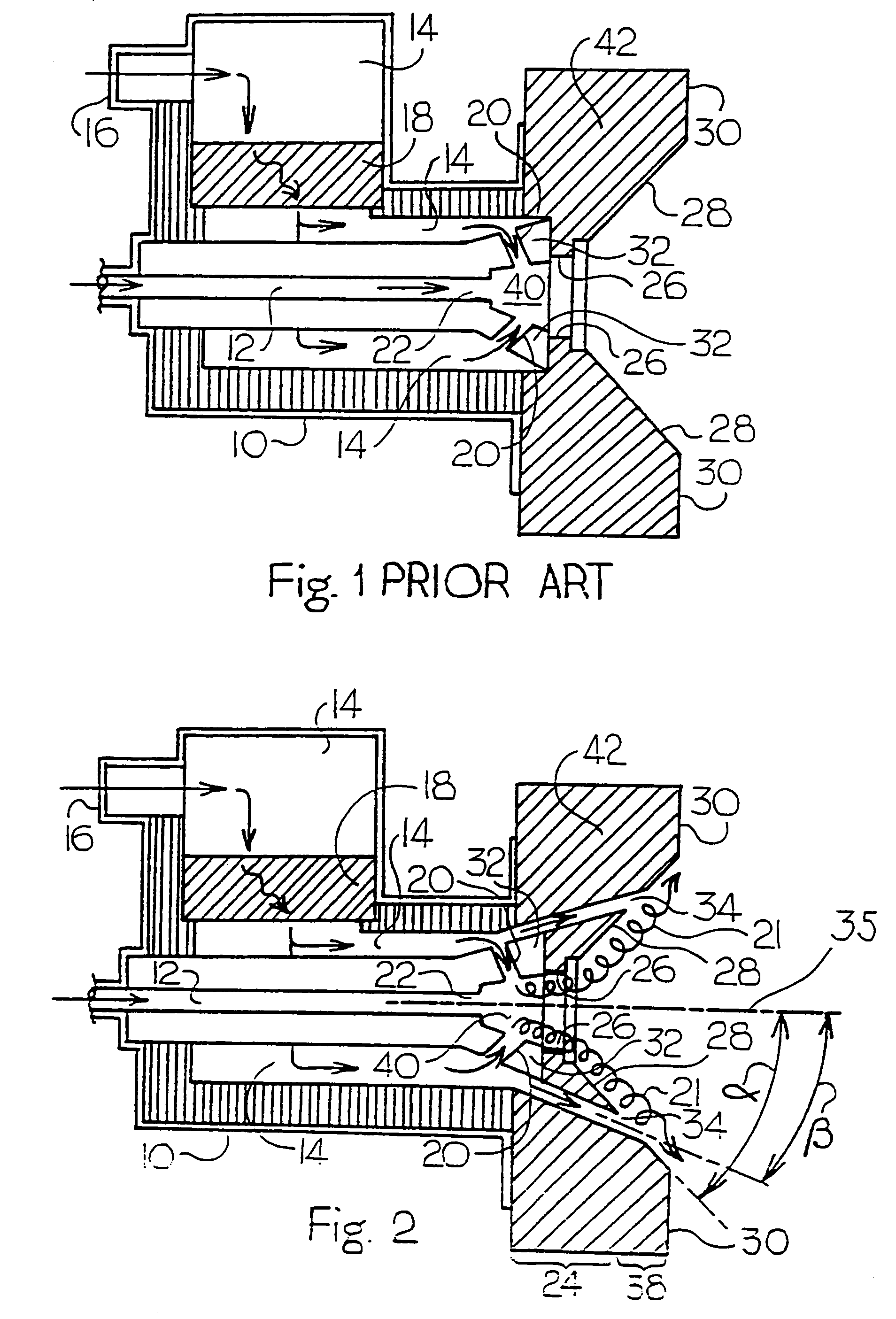Air staged low-NOx burner
a low-nox burner and burner technology, applied in the field of low-nox burners, can solve the problems of limiting flame temperature and thermal nox, and achieve the effects of reducing nox production, limiting flame temperature and thermal nox, and reducing nox emissions
- Summary
- Abstract
- Description
- Claims
- Application Information
AI Technical Summary
Benefits of technology
Problems solved by technology
Method used
Image
Examples
Embodiment Construction
[0021]As seen in FIG. 1, the design of a typical prior art burner includes a burner body 10, which houses an air passageway 14 and a fuel passageway 12. The air passageway 14 may have an optional heat storing media 18 area, depending upon the application. Fuel is introduced into the fuel passageway 12, which directs the fuel through the burner body 10, and flows out through a fuel nozzle 22. All required combustion air enters through an air entrance 16, runs through the air passageway 14 and enters a combustion region through primary air jets 20. The burner body 10 is fixed to a port block 42. The fuel and air initially mix in a burner throat 40 of the burner. Combustion occurs in the burner throat 40 and continues into cup 26 and from these to a space surrounded by a dish surface 28.
[0022]The present invention is an apparatus and method directed to an air-staged low-NOx burner. The first embodiment is illustrated in FIG. 2. A liquid or gaseous fuel is introduced into the burner bod...
PUM
 Login to View More
Login to View More Abstract
Description
Claims
Application Information
 Login to View More
Login to View More - R&D
- Intellectual Property
- Life Sciences
- Materials
- Tech Scout
- Unparalleled Data Quality
- Higher Quality Content
- 60% Fewer Hallucinations
Browse by: Latest US Patents, China's latest patents, Technical Efficacy Thesaurus, Application Domain, Technology Topic, Popular Technical Reports.
© 2025 PatSnap. All rights reserved.Legal|Privacy policy|Modern Slavery Act Transparency Statement|Sitemap|About US| Contact US: help@patsnap.com



